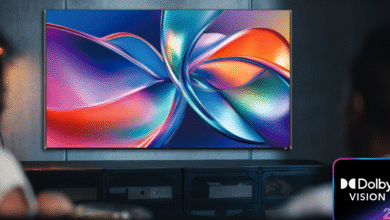Dolby Vision 2: The Controversial New HDR Standard

▼ Summary
– Dolby Vision 2 expands on the original format by adding motion handling and bridging the gap between filmmaker intent and actual viewing environments.
– It introduces “Content Intelligence” with AI capabilities to address common complaints about shows being too dark on non-optimal setups.
– The system uses TV sensors to detect ambient light and adjust content presentation based on the viewer’s room brightness.
– It aims to improve clarity in any viewing environment without compromising the creator’s original intent.
– Another feature called Authentic Motion is expected to be controversial and cause significant discussion among purists.
Dolby has unveiled the next evolution of its high dynamic range technology with the introduction of Dolby Vision 2, a significant upgrade designed to enhance how viewers experience HDR content across a wider range of conditions. This new standard builds upon the original Dolby Vision by incorporating advanced features aimed at preserving creative intent while adapting to real-world viewing environments.
One of the most talked-about elements is the integration of Content Intelligence, which leverages AI-driven processing to address common viewer complaints, particularly regarding overly dark scenes. Many films and series are color-graded for ideal settings, dark rooms and premium displays, which can result in frustratingly dim images on standard setups. Content Intelligence uses built-in sensors to analyze ambient light and dynamically adjust brightness, contrast, and clarity, striving to deliver a balanced picture without sacrificing the director’s original vision.
Another groundbreaking addition is Authentic Motion, a feature focused on refining how movement is rendered on screen. While the original Dolby Vision prioritized static image quality, this new component aims to tackle motion handling, a area where many displays struggle. By intelligently processing motion data, Dolby Vision 2 seeks to reduce artifacts like stuttering or blur without introducing the artificial “soap opera effect” often associated with motion smoothing technologies.
However, these innovations are not without controversy. Purists argue that automating adjustments based on ambient conditions or motion algorithms could stray too far from artistic intent. The very idea of dynamically altering content in response to room lighting or viewer preferences challenges long-held beliefs about how films and shows should be presented. As Dolby pushes forward with these adaptive technologies, the debate between fidelity to source material and accessibility in diverse viewing settings is sure to intensify.
(Source: Ars Technica)

